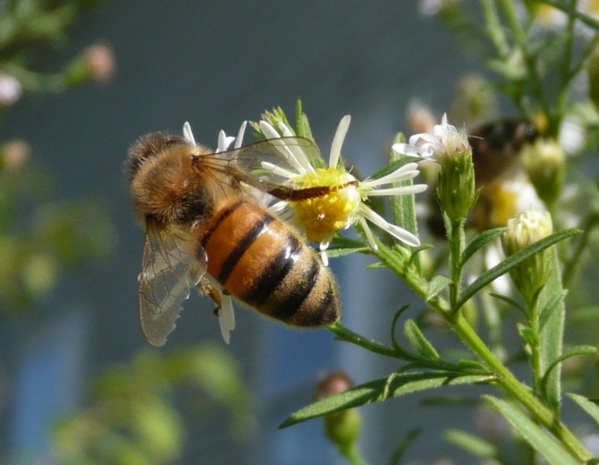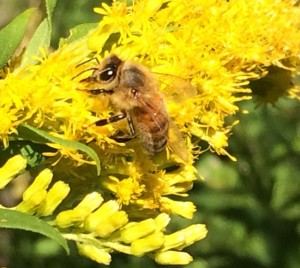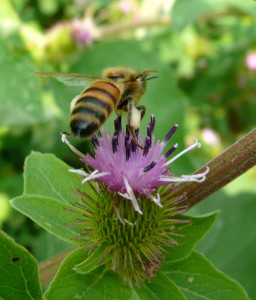Live From the Hive: October 2014

“Asters” by Annie Watson, Thistle Hill Studio
On a recent sunny afternoon walk, I spotted fall-blooming aster flowers alive with pollinators such as wasps, solitary bees, butterflies, and honey bees, all loading up on pollen and nectar.
Aster flowers come in many colors and sizes, from the rich violet-colored New England Aster to the not-so-showy Bushy Aster, a 1 to 3-foot tall leafy plant that can be covered with small white flowers with yellow centers. While not spectacular to look at, this plant provides food and cover for many creatures. Wild turkeys, goldfinches, chipmunks, and white-footed mice, to name a few, eat the seeds, while the leaves are eaten by deer and rabbits. The flower depends on insects for pollination and in turn provides them with food. The plant’s leafy foliage also provides shelter for butterflies, spiders, voles and mice, frogs and toads, birds, and many insects. Amazing plants!

